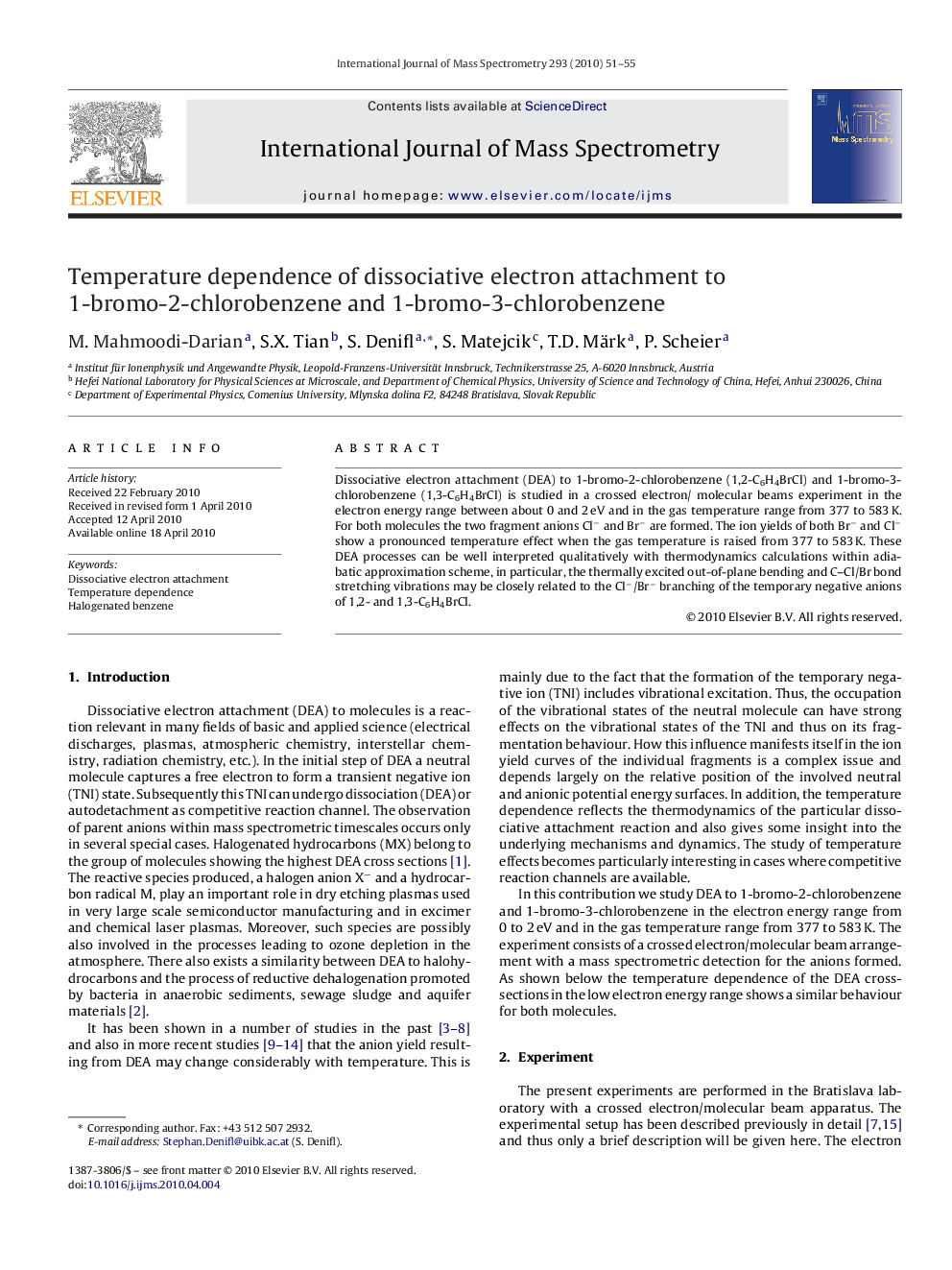| Article ID | Journal | Published Year | Pages | File Type |
|---|---|---|---|---|
| 1194534 | International Journal of Mass Spectrometry | 2010 | 5 Pages |
Dissociative electron attachment (DEA) to 1-bromo-2-chlorobenzene (1,2-C6H4BrCl) and 1-bromo-3-chlorobenzene (1,3-C6H4BrCl) is studied in a crossed electron/ molecular beams experiment in the electron energy range between about 0 and 2 eV and in the gas temperature range from 377 to 583 K. For both molecules the two fragment anions Cl− and Br− are formed. The ion yields of both Br− and Cl− show a pronounced temperature effect when the gas temperature is raised from 377 to 583 K. These DEA processes can be well interpreted qualitatively with thermodynamics calculations within adiabatic approximation scheme, in particular, the thermally excited out-of-plane bending and C–Cl/Br bond stretching vibrations may be closely related to the Cl−/Br− branching of the temporary negative anions of 1,2- and 1,3-C6H4BrCl.
Graphical abstractWe have investigated dissociative electron attachment to bromo-chloro-benzenes at different gas temperatures. A pronounced temperature effect of the ion yield of fragment anions is observed.Figure optionsDownload full-size imageDownload high-quality image (81 K)Download as PowerPoint slide
